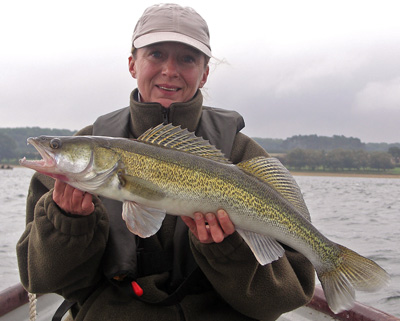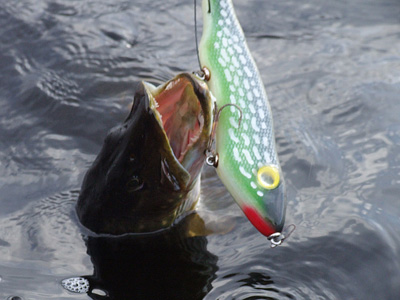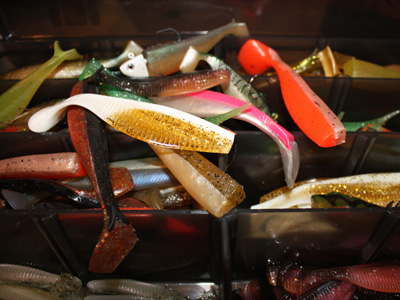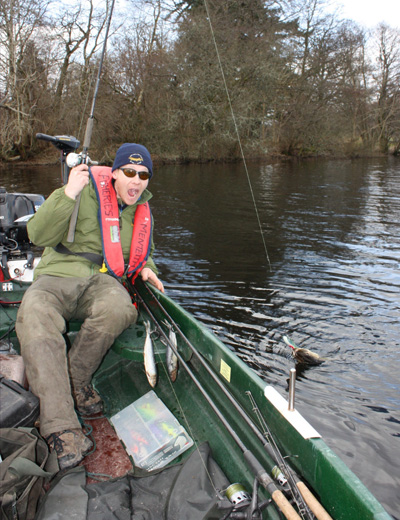Lure fishing above any other method of predator fishing seems to be growing at a rate where we could quite possibly see the older methods, once favoured by UK pike and predator anglers, being annexed into second place or becoming a minority pursuit. But despite this there’s still much myth and mystery attributed to lure angling that it doesn’t really deserve, after all it’s just another way of catching fish.
So to that end over the next few weeks and through this series I intend to lift the lid on lure fishing, its secrets, why we do what we do and numerous tips and tricks that will hopefully see you put a lot more fish on the bank this winter. Not only will we be covering the subject in the written word, but I will also be doing a number of short videos as the series progresses to show you exactly what I mean.
So where do we start then? Well, the first thing we need to look at is the tackle we need for lure fishing and a few of the terms that may be confusing to the beginner.
 Types of lures
Types of lures
When you hear anglers talking about lures these days they really are broken down into five separate categories, these being: crankbaits, jerkbaits, jigs, spoons and spinners. There are also lures which incorporate a bit of two different types, often called hybrid lures, but for the purpose of this series we will deal with the main types and touch upon the others where and when it may be necessary.
Crankbaits
The term crankbait really tells all you need to know in its name as these lures simply work by being cranked through the water. The term ‘crankbait’ actually originates from the USA, prior to its common usage in more recent years we always referred to crankbaits as plugs.
Crankbaits work thanks to a large vane, or lip, at the front of the lure which, according to its size and orientation, will force the lure down to a set depth as the lure is retrieved (or pulled as in the case of trolling). Crankbaits come in a wide variety of shapes and sizes and also in varying diving depths from very small lures that dive just inches below the surface to lures over 12 inches in length that will dive to very deep depths.
 Jerkbaits
Jerkbaits
Jerkbaits originated in the States and rather burst onto the UK angling scene in a big way in the 1990’s. These lures are often made of wood and rarely have much action when retrieved in a similar fashion to a crankbait. Instead the angler needs to impart action to the lure by jerking the rod in a certain manner. We will cover the whole subject of retrieve techniques when we talk about jerkbait fishing in depth, but for the time being it’s enough to know that most of the baits included in this category have no inherent action.
The only exception to this rule, and a set of lures that some would categorise on their own entirely, are the soft rubber lures. The most famous of these are the ‘Bulldawg’ and ‘Replicant’, possibly two of the most successful lures of all time. These two do have an action, albeit a subtle one, brought about either by a paddle tail, in the case of the ‘Replicant’, or a curly tail, as with the Bulldawg, that works the lure as it is pulled through the water.
 Jigs
Jigs
Jigs are another type of soft rubber lure that work via either a paddle tail or squirrely tail, but jigs are usually very small; anything from a half an inch to around six inches I would consider a jig as anything bigger couldn’t easily be worked on conventional jig rods and so would fall into the soft rubber jerkbait category.
Spinners and spoons
Some of the oldest types of lures out there; spoons in particular have been used to lure fish for thousands of years and work by flashing within the water, looking like a fleeing prey fish, and by the oscillating action they demonstrate when retrieved. Spoons can really be made to sing by using different retrieves but again we will cover this at a later date when we take a closer look at spoons.
Spinners work in a similar fashion to spoons, in that they flash as they are retrieved through the water, but they also spin around a central bar, causing vibrations that predatory fish find very attractive.
Tackle
There are many confusing aspects to the tackle that is used for lure angling, starting with the choice of reel, as there are very few freshwater applications where you might consider the use a multiplier reel over and above a fixed spool. But many lure anglers do exactly than and prefer a multiplier as their main reel of choice.
 I am often asked by beginners why they should consider the use of a multiplier and if they really necessary. The trouble is that it really depends upon the type of lure fishing that you are doing when jerkbait fishing, for example, a multiplier is absolutely essential as you will be using very strong 80-100lb braid and, sometimes, large and heavy lures.
I am often asked by beginners why they should consider the use of a multiplier and if they really necessary. The trouble is that it really depends upon the type of lure fishing that you are doing when jerkbait fishing, for example, a multiplier is absolutely essential as you will be using very strong 80-100lb braid and, sometimes, large and heavy lures.
With a fixed spool reel all of the wear and tear for this type of fishing would be upon the reel’s roller and bail arm and, to be frank, few fixed spools are built to withstand this type of strain in the long term. Likewise when trolling a lot of strain can put directly upon the roller and failure of the roller is very likely in the long term. Multipliers, having no bail arm and being directly geared, do not suffer from this problem and as such are ideal for use with this type of gear.
However, for general lure fishing with small to mid-sized crankbaits, spoons and spinners and most certainly with jigs, the fixed spool is still probably the better bet. Multipliers can be used with lighter gear, but with the light weight of the jigs and the light breaking strain of the braid used a multiplier isn’t, in my opinion, really suitable as the drag system is not geared for such fine fishing, whereas it is on a good front drag fixed spool reel.
On the other side of the coin we come to jerkbaiting gear. There is somewhat of a controversy amongst anglers as to why on earth we need to use such stiff rods and heavy braid when jerkbaiting, but the questioning usually comes from anglers who have no experience of the method.
The reasoning for the strong gear is nothing whatsoever to do with the playing or landing of the fish, but to handle the lures that are being used. Because some jerkbaits can weigh up to 6oz or more should something go wrong with the cast with the lack of stretch in braid, an over run or a snatch on the multiplier would cause lighter braid to part very easily. I have seen this in evidence myself and have had it happen with 65lb braid that I thought would be okay.
Not only is this situation dangerous, after all there’s 6oz of lure flying around unhindered, but it’s also bloody expensive as most jerkbaits cost over £10 to buy and some even two or three times that price. And it is often that final factor that necessitates the use of heavy braid as with braid of that strength should you get snagged the tackle is strong enough to bend the trebles out of most things – and so you get your lure back!
I could go on and on about tackle at this point, however with each branch of lure angling being very different in so many ways I feel it will be of more benefit if we cover the tackle that is directly relevant to each individual form of lure fishing, rather than try a brief description here.
In the next in the series I will look at the world of crankbaits and how to get the best from them.











